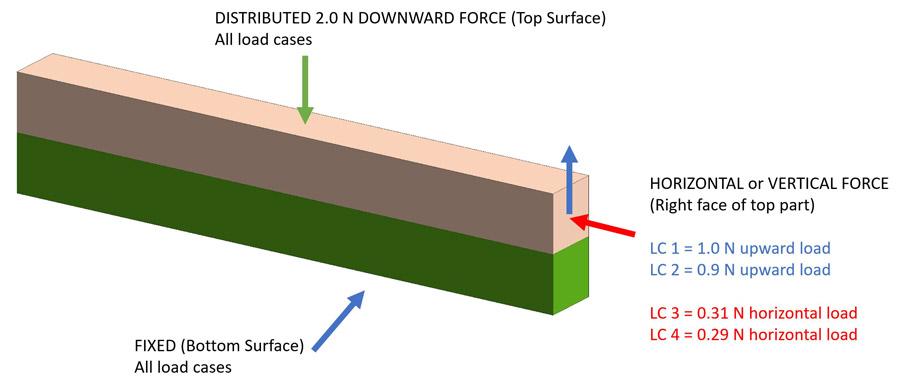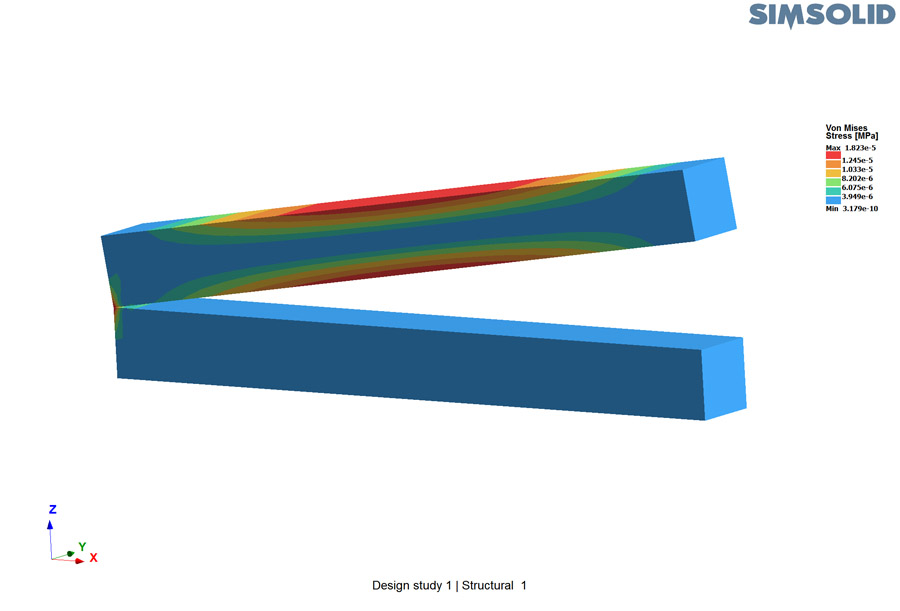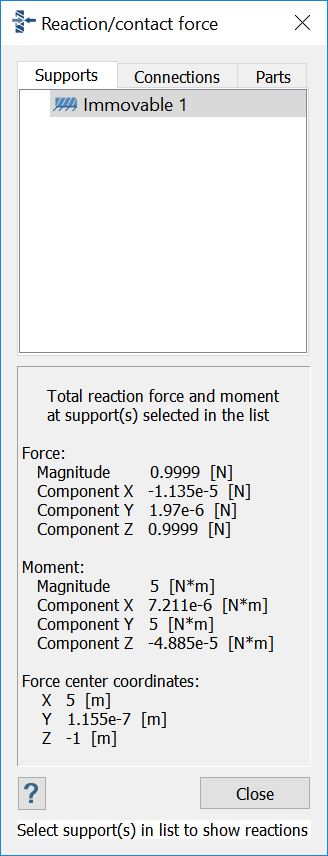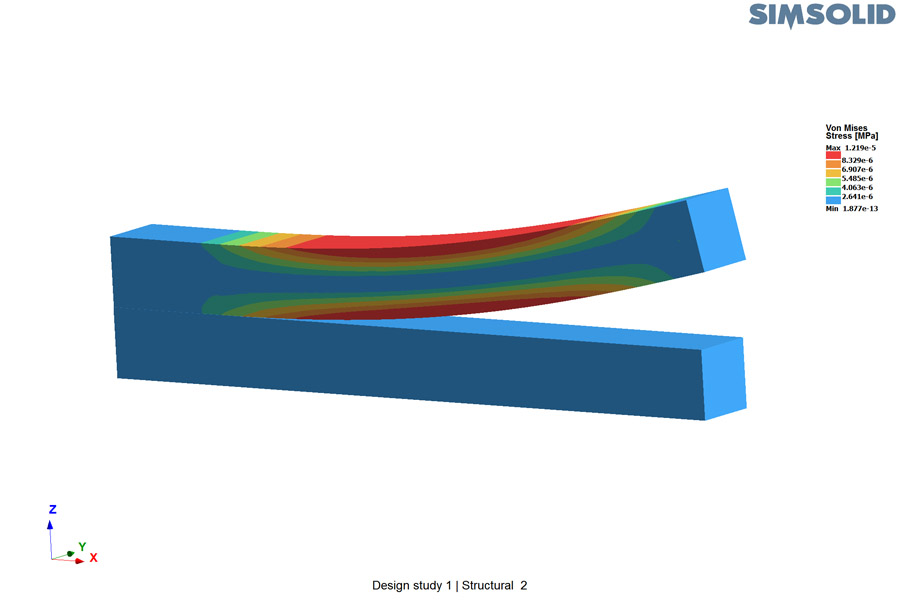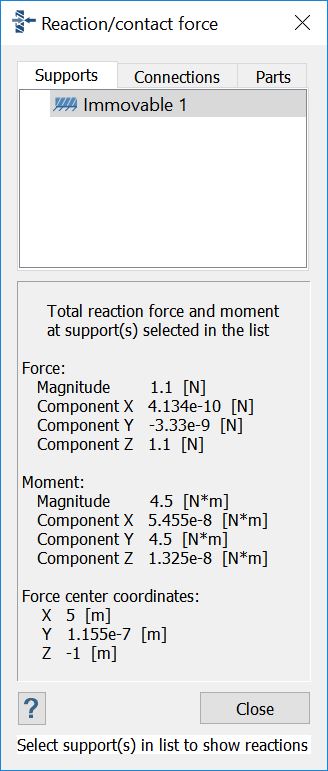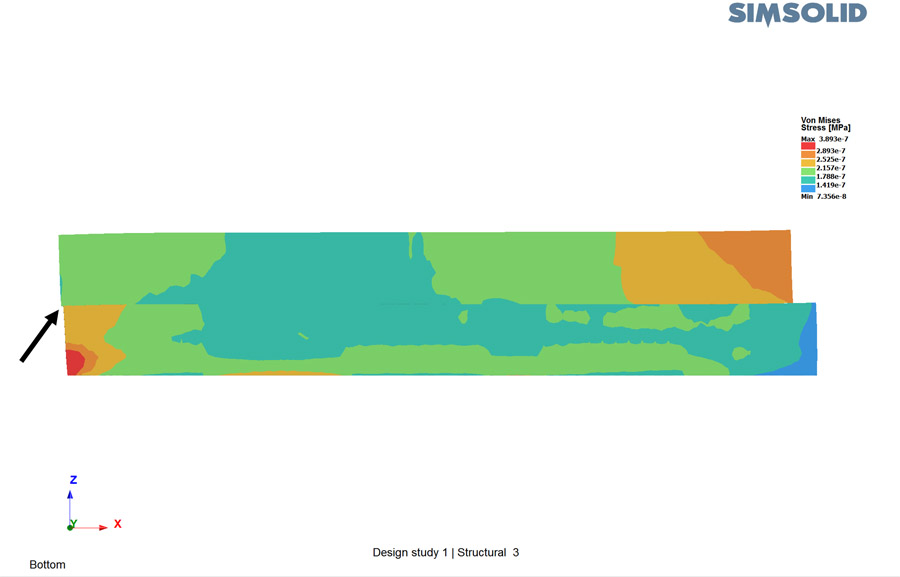New Altair SimSolid separating contact with friction
Separating contact with friction is a mechanical phenomenon which is traditionally difficult to simulate, especially when the friction is "dry" friction and either full separation or full sliding in the contact may occur for a given loading. Dry friction is characterized by sticking-sliding condition when sliding friction force is close to the maximum force that can be realized in the contact. After sliding started, the sliding friction force remains almost constant, it does not depend on velocity/displacement. This makes so called "elastic friction" models which are commonly used in traditional FEA not well suitable for simulation.
It is hard to find an easily verifiable benchmark to test separating contact with friction. So, we developed a new benchmark here. We suggest the readers check their existing simulation software against the benchmark. To verify the benchmark only basic engineering knowledge is necessary.
Altair SimSolid separating contact benchmark model
Let us consider two solid bars in contact, one on the top of the other. Each bar’s dimensions are 10 by 1 by 1 m (L x W x H). The lower bar is fixed on the bottom surface and separating contact is set between the bars with a friction coefficient of 0.15. Four load cases are considered. In all load cases, the upper bar is loaded with uniformly distributed total load 2 N. Loads at the right end of the upper bar are different for the load cases.Figure 1 – Model definition
Load case 1, complete separation
Total lifting load of 1 N is applied at the end of the upper bar. In this load case, the bar can be in the equilibrium state only if total separation of contact happened and upper bar contact lower bar in a very narrow hinge-like area at the bar's corners. From Figure 2, one can see that that is exactly what simulation predicts. The contact is fully released, the bar is rotating around the "hinge", stress is distributed as if the bar is on two supports and the reaction at the hinge is 1 N.
Figure 2 – vertical equilibrium state, complete separation
Figure 3 – reaction forces
Load case 2, partial separation
In the second load case, the lifting load is reduced to 0.9 N. This provides partial contact separation. Altair SimSolid results indicate the non-separation zone and a clear separation area. The reaction force in the contact is a vertical 1.1 N which is the exact value.
Figure 4 – vertical load state, partial separation
Figure 5 – reaction forces
Load case 3, full horizontal slippage
Next consider a total shifting horizontal force of 0.31 N applied to the end of the upper bar. Maximum friction force is give as:
Fmax = (friction coefficient)*(Compressive load) = 0.15*2 = 0.3 N
Therefore, this a border equilibrium state of the active shifting force being just larger than the maximum friction force. Here the expected result is for the bar to start sliding. One can see the upper bar compresses along the contact area and the left end begins to slip (see small step in left side of Figure 6).
Figure 6 – horizontal equilibrium state, slippage due to friction limit
Load case 4, partial horizontal slippage
Finally, the total shifting force is reduced to 0.29 N. This is below the maximum friction force limit. Now, one can see that there is no slip in the left side and compression along the length of the upper bar (Figure 7).
Figure 7 – no slippage state
Practical application of separating contact
Want to see how easy it is to use separating contact in Altair SimSolid? Here is a quick video that shows a practical example using a 54-part assembly of a hanger beam with bolted connections.


